Best ways to cure squealing disc brakes on a mountain bike
Squealing disc brakes can ruin a ride, here are Bike Perfect's top tips for a quieter life on the trails
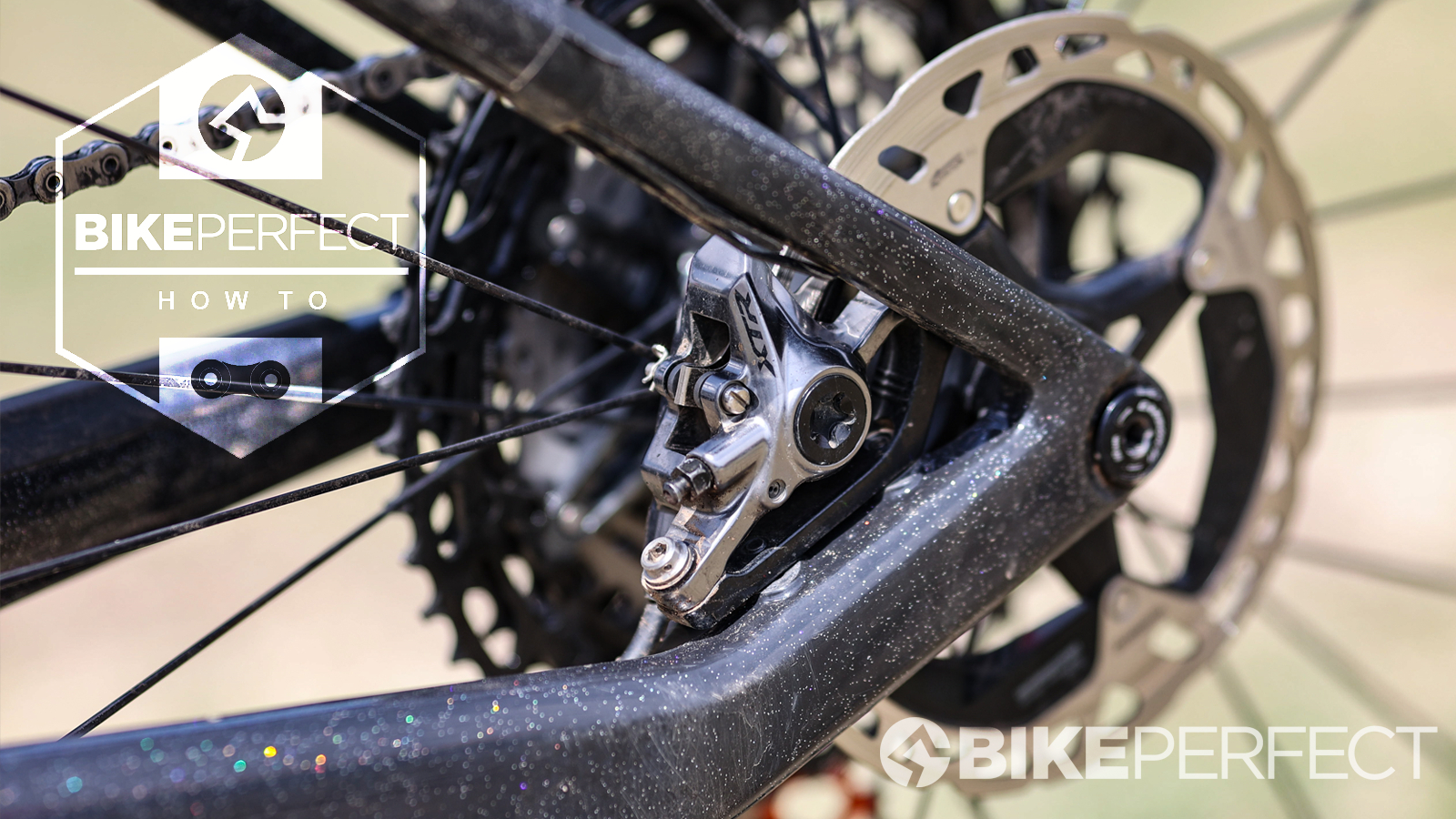
Squealing disc brakes are one of mountain biking’s biggest frustrations, but the good news is they can almost always be fixed. The solutions are often simple, and we’ll go through them here, starting with the likeliest culprits.
Even the best mountain bike brakes can be affected as the squealing is caused by high-frequency vibration, from things like water trapped between the pad and the rotor, or an inconsistent braking surface on the pad or the rotor itself. The sound of that vibration gets amplified through your wheels and your hollow frame, and then behold, a trumpet call the whole forest can hear.
Occasional squealing is normal, and you can often clear it by just carrying on with good hard braking to clear whatever grit or water is causing it - or riding through more mud to grind off the bits. But if it’s persistent, you're going to want to read on to find out how to stop the noise.
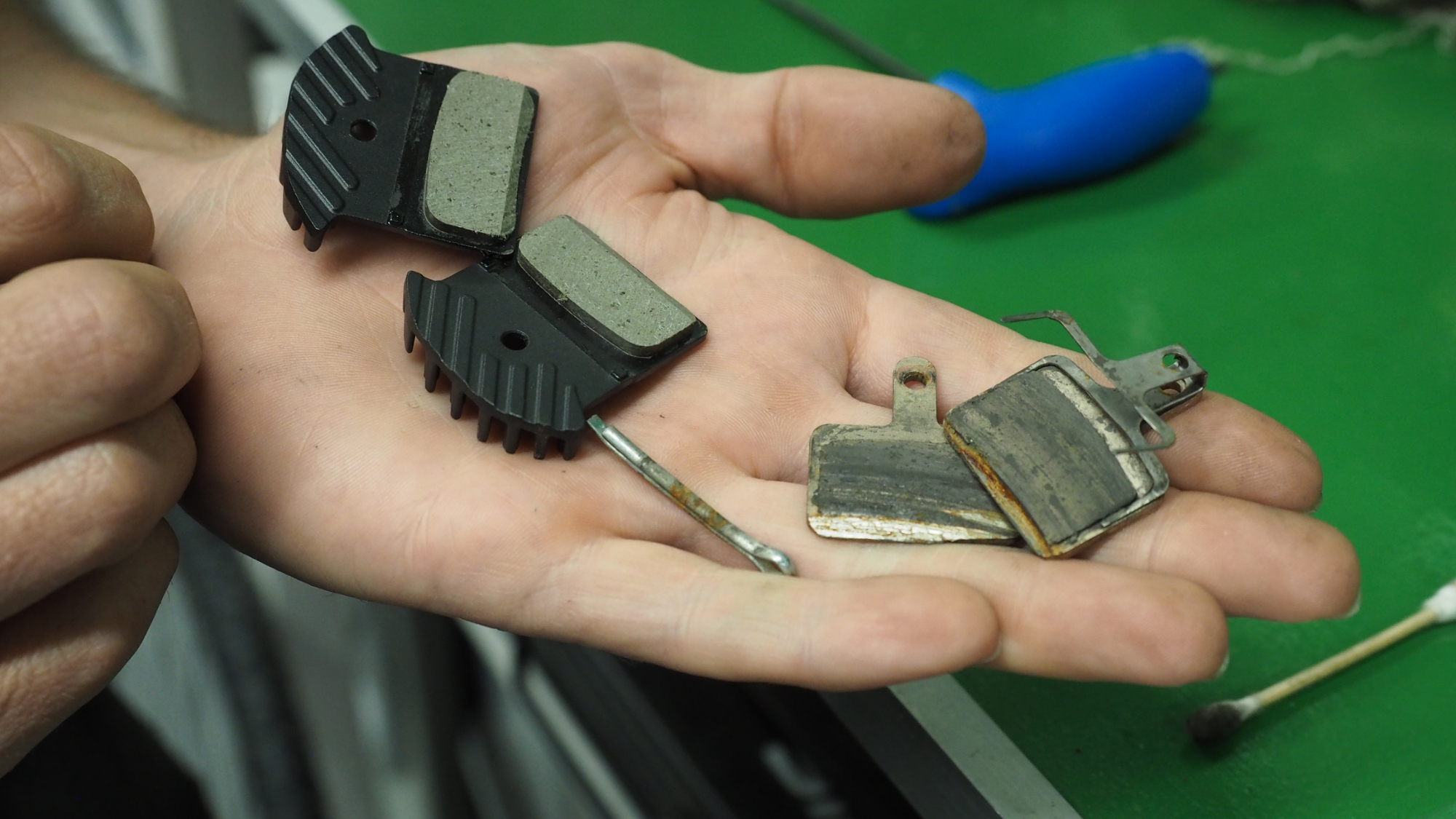
How do I bed in new disc brakes?
First things first. Brake pads leave a deposit on the metal rotors which actually helps braking power. When the pads or rotors are new, you need to spend 10 minutes carefully bedding in the brakes to ensure that the deposit goes on evenly across the rotors. Otherwise, you’ll end up with an uneven, baked-on, vibration-inducing deposit across the rotors and worst-case you’ll need to replace them.
- In a safe area, ride at about 10mph then evenly apply your brakes while seated, until you slow to walking pace. Don’t skid, and vitally, don’t brake to a standstill or you risk leaving a ridge of brake deposit on the rotor. Repeat this 10 times.
- Then repeat the process from about 15mph.
- You may need more speed or more repetitions for larger rotors, and throughout the process you should feel the braking power increasing.
- Building up heat progressively is key here. It might be tempting to build heat by simply dragging your brakes while pedaling, but avoid that, as the wheels won’t be turning evenly enough.
Have I got a bent disc brake rotor?
It’s easy to bend a rotor, especially in transit, so spin the wheel while it’s still on the bike, and look for a kink. You might even notice the wheel coming to a halt at the bent part. If there’s a kink, carefully use a clamped-on adjustable spanner or a rotor straightening tool to fix it.
For a more precise check, remove the rotor and put it on a sheet of white paper to better show up any unevenness.
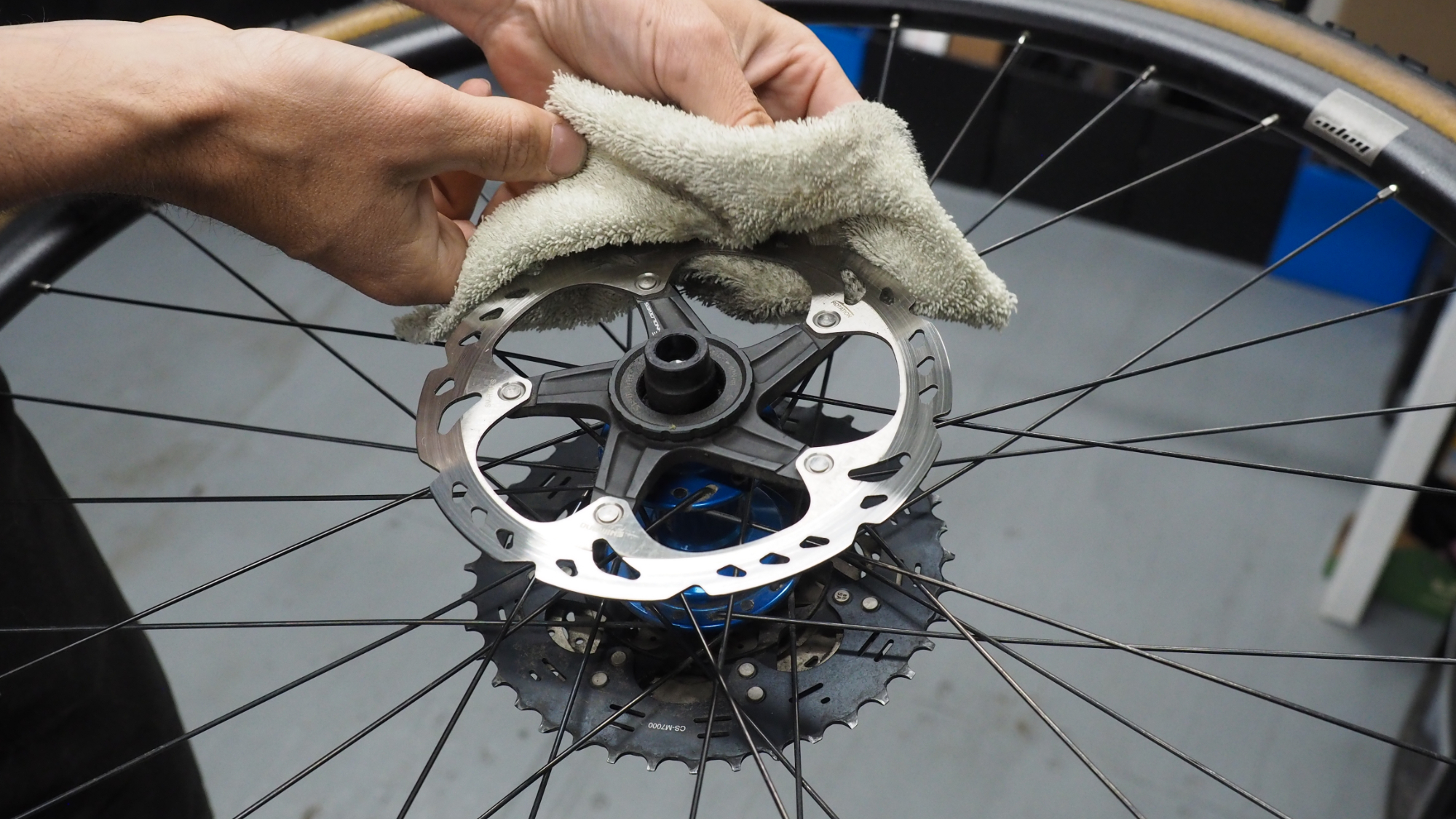
How do I clean a brake rotor?
Use a clean rag with disc brake cleaner or cheaper isopropyl alcohol, to rid your rotors of oily deposits that can cause squealing and also kill your pads. Don’t use general bike cleaner or detergent because they may leave deposits of their own.
Generally, it’s good not to mess too much with the rotors or pads, but if you’ve accidentally used spray oil inside your workshop, or got drivetrain cleaner on your discs, or you've been transporting your bike on the back of your car where the rotors are near exhaust and road contaminants, giving the rotors a good clean may get rid of the squealing.
How do I clean a brake rotor?
Use a clean rag with disc brake cleaner or cheaper isopropyl alcohol, to rid your rotors of oily deposits that can cause squealing and also kill your pads. Don’t use general bike cleaner or detergent because they may leave deposits of their own.
Generally, it’s good not to mess too much with the rotors or pads, but if you’ve accidentally used spray oil inside your workshop, or got drivetrain cleaner on your discs, or you've been transporting your bike on the back of your car where the rotors are near exhaust and road contaminants, giving the rotors a good clean may get rid of the squealing.
How do I decontaminate brake pads?
It’s important to know that disc brake pads are porous, so don’t use any kind of solvent on them or the dissolved contaminant will just soak permanently into the pad. A good scrub with water and a clean brush might help.
But if you’ve got surface oil contamination or glazed pads (from building up too much heat before the pads are bedded in), then you could try sandpapering or carefully grinding the surface. Bear in mind that even the natural oil from your fingers can contaminate a brake pad.
More extreme methods include fixing the pads in a vice and carefully heating them with a blowtorch to try to boil off the contaminants (don’t let the pad get to glowing point) or baking them in the oven.
At some point, you may need to just give up and replace your pads, especially if contaminants have soaked in.
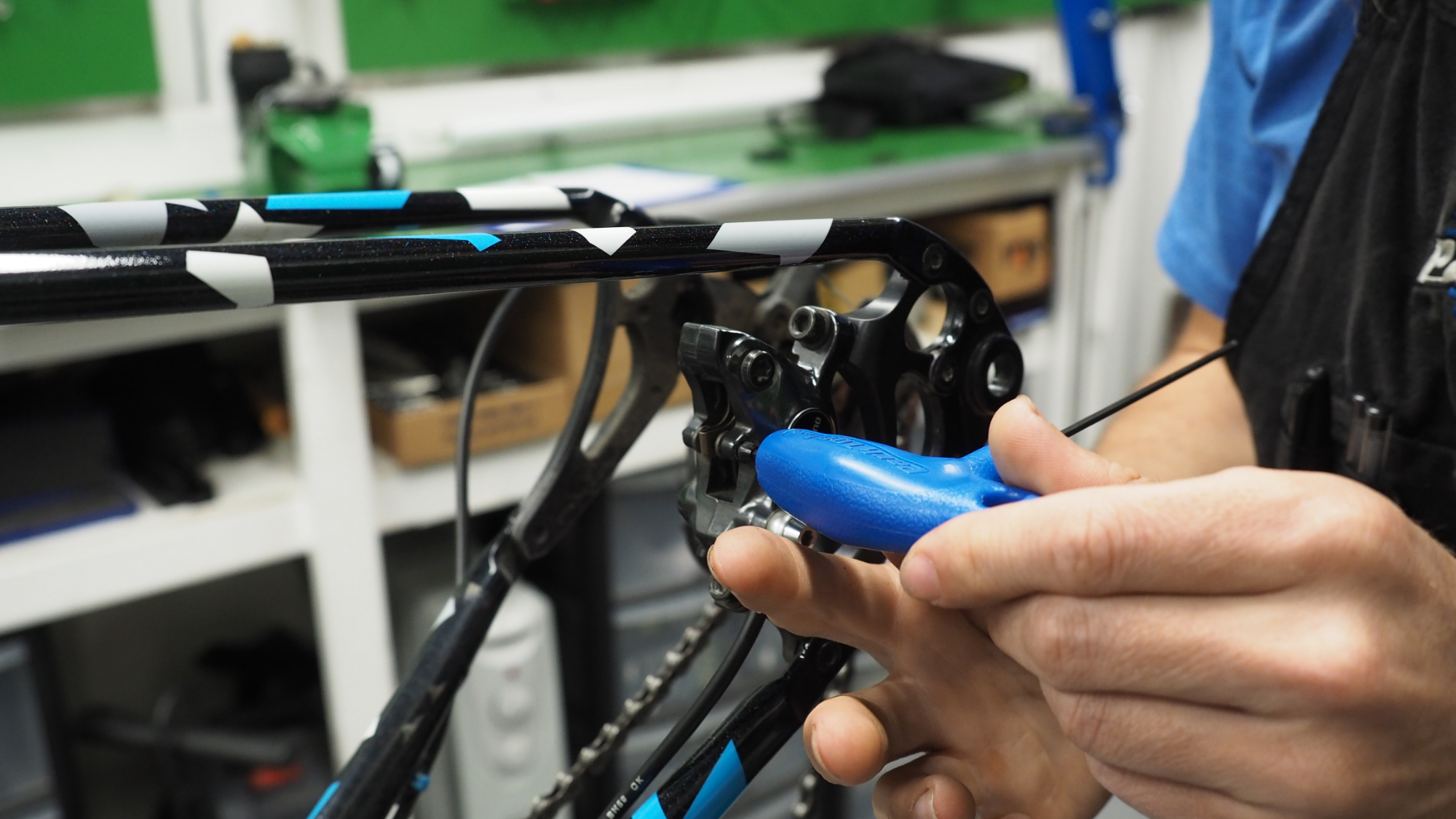
Make sure everything’s tight
It’s unlikely that your rotor bolts have come loose, but check they are evenly tightened to the right torque just in case (6.2nm for SRAM, 2-4nm for Shimano; obviously this isn’t an issue for Centerlock rotors.) You could also carefully tighten your caliper mounts to make sure there’s no vibration there, use locking fluid and replace worn or low-quality bolts.
How do I realign the brake calipers?
If the left and right calipers don’t squeeze onto the rotor at the same time, or exactly square-on, they can cause vibration and squealing. Visually check that the rotor is aligned with the center join line in the caliper. If it’s not, here is a simple method on how to adjust hydraulic disc brakes. Loosen the two bolts that hold the caliper to the frame until the caliper has some movement, gently squeeze the brake to pull the brake onto the rotor, and then evenly tighten the bolts while continuing to hold the brake lever.
If you swap different wheels with slightly different rotor spacing onto your bike, you may need to realign the calipers each time. And if the calipers seem to refuse to align properly no matter what you do, ask your local bike shop to re-face the mounts to ensure they are dead square on.
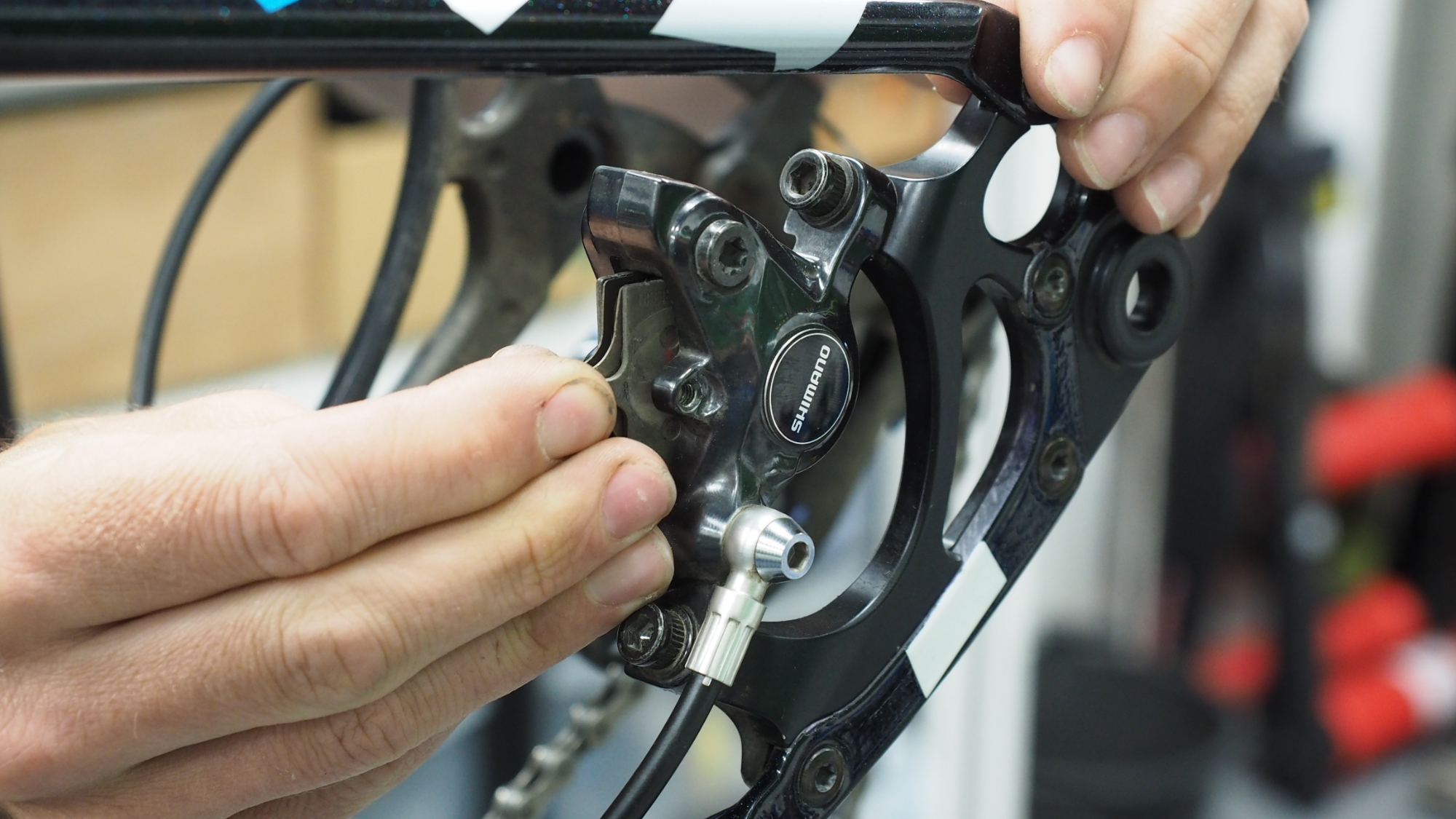
Other ways to stop squealing disc brakes
The methods here will solve most squealing, but if you’re still having no luck, swapping components in and out should help to narrow things down:
- Try different pads. For example, resin/organic pads tend to be quieter than metallic
- Some combinations of pads and rotors just seem to work more happily together than others. Ask around, and as a starting point, use pads and rotors from the same brand.
- If you’ve got more than one bike with compatible parts, experiment with swapping the wheels, pads and/or rotors between the bikes, one at a time.
Worst case scenario and none of the above methods work, you may need to bite the bullet and replace the disk and rotors. Check out our best mountain bike disc brake rotors and best mountain bike brake pads guides if you are unsure which options are the best for you.
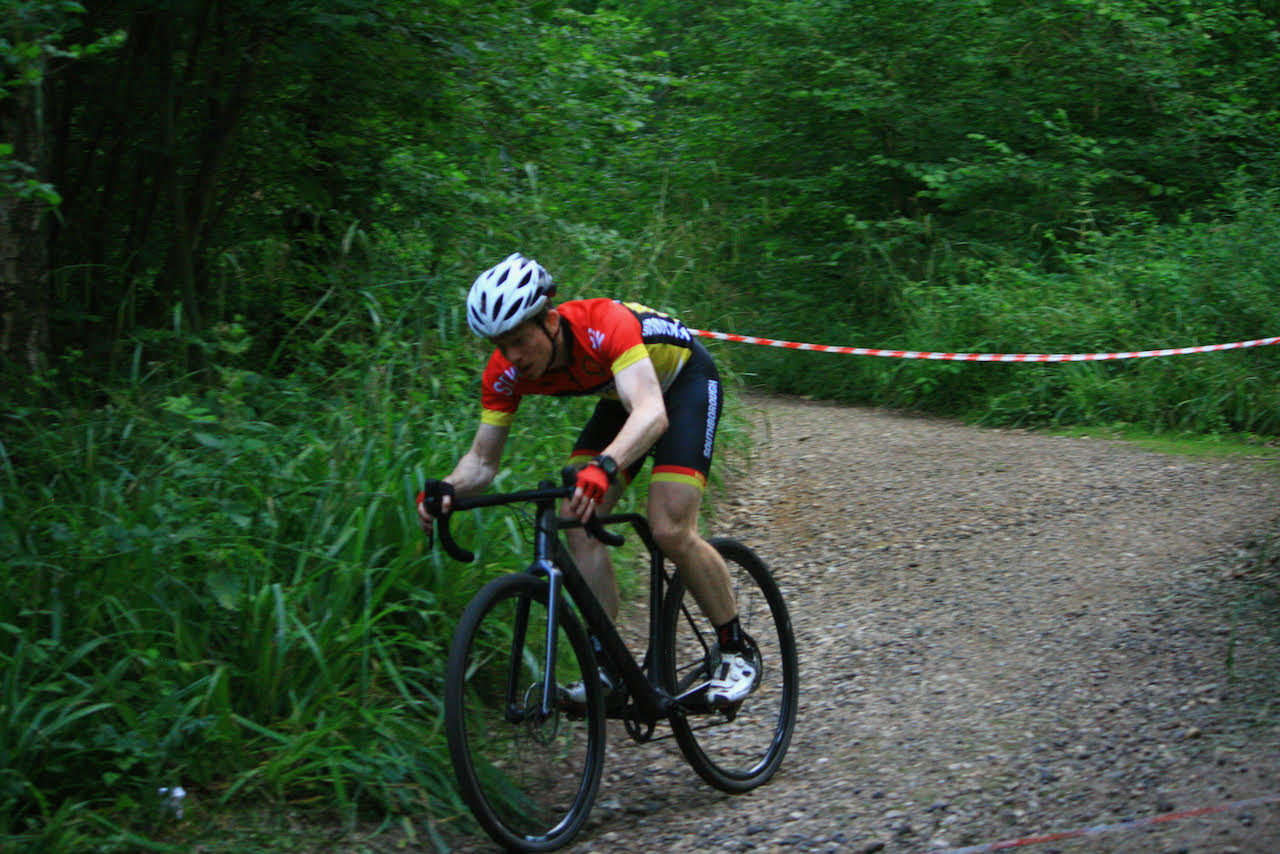
Sean has old school cycle touring in his blood, with a coast to coast USA ride and a number of month-long European tours in his very relaxed palmares. Also an enthusiastic midpack club cyclocross and XC racer, he loves his role as a junior cycle coach on the Kent/Sussex borders, and likes to squeeze in a one-day unsupported 100-miler on the South Downs Way at least once a year. Triathlon and adventure racing fit into his meandering cycling past, as does clattering around the Peak District on a rigid Stumpjumper back in the day.
Height: 173cm
Weight: 65kg
Rides: Specialized Chisel Comp; Canyon Inflite CF SLX; Canyon Aeroad; Roberts custom road bike
